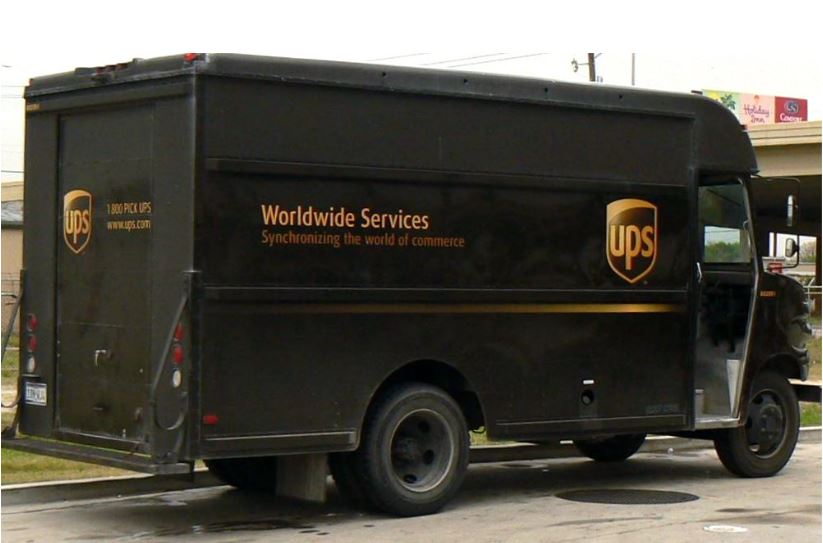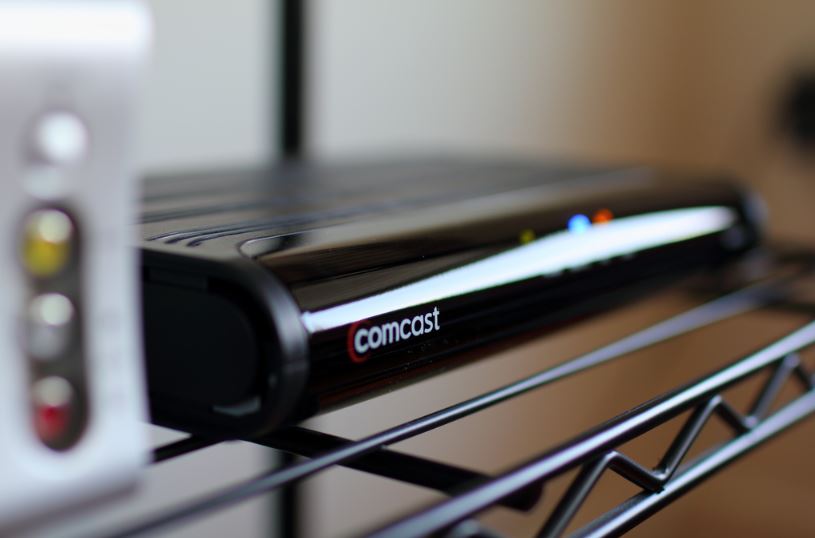
How to Manage a Distributed Remote Team Nov 23, 2024


How to Secure CRM Software and Ensure Data Privacy Sep 30, 2024



How NLP Can Transform Your Communication Skills Aug 27, 2024

Essential HVAC Maintenance for Rental Properties Aug 26, 2024

Maximizing Equipment Lifespan with CMMS Software Aug 08, 2024

Top Business Tools for Streamlining Your Operations Aug 01, 2024
Everyday Things That Technology Is Going To Make Obsolete By 2025
Sep 08, 2016 10:23
As regular people, it’s often hard for us to imagine what the world will be like in the future. We tend to think it’ll be a lot like it is today, but perhaps with faster computers. The reason we’re not very good at thinking about the future is that it’s dependent on our collective imagination. The future doesn’t just happen: we build it.
It all means that we sometimes end up with some pretty crazy outcomes. Heck, an article like this on a tech website was almost unthinkable a couple of decades ago. Now it’s so mainstream, nobody notices. And what about the bloggers behind all these articles that get written every day? There’s a burgeoning market for them too which never existed before.
Technology has a habit of appearing magical or far-fetched until it actually happens. Then it becomes normal within a couple of weeks, or more often, a couple of days.
Of course, predicting the path of technology is notoriously difficult. Almost everybody who tries to do it utterly fails. But there is still scope to make educated guesses based on the things that are already possible and in the works today. Here’s what to expect.

en.wikipedia.org
The manufacturers behind these systems, like Lexus and BMW, argue that they are better than mirrors. For one, cameras can be placed so that views are not obstructed by the car itself. As every driver knows, visibility is limited by the rear windshield. And side mirror issues are even worse. Even today, modern cars have side mirror blind spots, and this can lead to accidents.
Automotive technology leader Tesla has indicated that mirrorless cars aren’t just a pipe dream. The company intends to make them a reality on all their models by 2018. Tesla’s motivations, however, are slightly different from other car makers. Right now battery technology is lagging, and electric vehicles have limited range. Tesla hopes that by removing mirrors, their cars will have less drag and go further.

pixabay.com
In the future, we can expect these payment methods to grow. It’s just so much more convenient paying using your phone than carrying around your phone and your wallet. Plus, as wearables start to hit the big time over the next few years, people will want to pay with these too. Finally, mobile payment platforms offer a level of security that is far superior to today’s plastic. Users will be able to protect their account with biometric data.

en.wikipedia.org
The first technology that’s going to make them obsolete is drones. The naysayers say that drone delivery services are still a way off from actually being used. But the FAA has granted regulatory permission in principle. And companies like Amazon are already trialing drone delivery services. What’s more, companies around the world are experimenting with different autonomous delivery vehicles. For instance, Domino’s have started experimenting with a cute little drone that’ll bring you your pizza.
The other big challenge to delivery companies is 3D printers. Take the new 3D printer - Zortrax M300 - for instance. It now has a resolution of up to 90 microns. That’s represents an important milestone for the delivery business. It means that 3D printers are getting to the stage where they’re good enough to print out most consumer products. Shortly, consumers won’t have to order from Amazon and have Amazon ship the goods. They’ll just be able to download a design from the company’s website and then print out the desired product.
Up until now, most people just put up with the limitations of cable. There weren’t a lot of options. But recent data shows that people are now finally jumping ship. Research done by MoffettNathanson indicates that the industry is losing customers. According to their figures, cable companies lost 86,000 subscribers in the first quarter of the year. This might not sound like an awful lot. But remember, cable companies traditionally do their marketing in the first quarter. Normally, you’d expect to see a bump in numbers. But not this year.

www.flickr.com
Instead, customers are moving to newer and better platforms. Users are now streaming content straight from the web onto their smart TVs. And as a result, they’re only paying for the content that they actually want to consume. No more Golf Channel, and no more teleshopping. Sounds good, doesn’t it?
It all means that we sometimes end up with some pretty crazy outcomes. Heck, an article like this on a tech website was almost unthinkable a couple of decades ago. Now it’s so mainstream, nobody notices. And what about the bloggers behind all these articles that get written every day? There’s a burgeoning market for them too which never existed before.
Technology has a habit of appearing magical or far-fetched until it actually happens. Then it becomes normal within a couple of weeks, or more often, a couple of days.
Of course, predicting the path of technology is notoriously difficult. Almost everybody who tries to do it utterly fails. But there is still scope to make educated guesses based on the things that are already possible and in the works today. Here’s what to expect.
The End Of Car Mirrors
In July, Japanese authorities gave the thumbs up to mirrorless cars. Since then, there’s been something of a storm in the tech media. The idea is to replace mirrors using CCTV systems around the car. When a driver goes to look in their rear-view mirror, they will instead be greeted by a screen displaying a camera feed.en.wikipedia.org
The manufacturers behind these systems, like Lexus and BMW, argue that they are better than mirrors. For one, cameras can be placed so that views are not obstructed by the car itself. As every driver knows, visibility is limited by the rear windshield. And side mirror issues are even worse. Even today, modern cars have side mirror blind spots, and this can lead to accidents.
Automotive technology leader Tesla has indicated that mirrorless cars aren’t just a pipe dream. The company intends to make them a reality on all their models by 2018. Tesla’s motivations, however, are slightly different from other car makers. Right now battery technology is lagging, and electric vehicles have limited range. Tesla hopes that by removing mirrors, their cars will have less drag and go further.
No More Plastic Credit Cards
We’ve known that cash has been declining for some time. Ever since companies like Visa and Amex introduced plastic cards in the 1970s, we’ve used less of it. But the era of plastic cards may itself be coming to an end. In the digital age, it simply isn’t necessary to lug plastic cards around in your wallet. All of their functionality can be perfectly replicated on your phone. In fact, many people who keep up to date on tech will know that payment systems are already dematerialising. Apple, Google, and Samsung have all released payment systems that mean you don’t even need your credit card anymore.pixabay.com
In the future, we can expect these payment methods to grow. It’s just so much more convenient paying using your phone than carrying around your phone and your wallet. Plus, as wearables start to hit the big time over the next few years, people will want to pay with these too. Finally, mobile payment platforms offer a level of security that is far superior to today’s plastic. Users will be able to protect their account with biometric data.
The End Of Delivery Companies
The delivery business has been under attack by technology for decades. And when email first became a thing, many were sounding the death knell of the industry. That didn’t happen, mainly because of the explosion in online shopping. But now delivery companies are once again in trouble.en.wikipedia.org
The first technology that’s going to make them obsolete is drones. The naysayers say that drone delivery services are still a way off from actually being used. But the FAA has granted regulatory permission in principle. And companies like Amazon are already trialing drone delivery services. What’s more, companies around the world are experimenting with different autonomous delivery vehicles. For instance, Domino’s have started experimenting with a cute little drone that’ll bring you your pizza.
The other big challenge to delivery companies is 3D printers. Take the new 3D printer - Zortrax M300 - for instance. It now has a resolution of up to 90 microns. That’s represents an important milestone for the delivery business. It means that 3D printers are getting to the stage where they’re good enough to print out most consumer products. Shortly, consumers won’t have to order from Amazon and have Amazon ship the goods. They’ll just be able to download a design from the company’s website and then print out the desired product.
No More Cable Companies
Cable companies have been dominating our airwaves for as long as most of us can remember. And they come with a cost. Right now, you pay for a bunch of channels and shows you don’t actually watch. And yet, you have to pay the same cable subscription as everybody else. As a result, there’s a lot of resentment among consumers about the service.Up until now, most people just put up with the limitations of cable. There weren’t a lot of options. But recent data shows that people are now finally jumping ship. Research done by MoffettNathanson indicates that the industry is losing customers. According to their figures, cable companies lost 86,000 subscribers in the first quarter of the year. This might not sound like an awful lot. But remember, cable companies traditionally do their marketing in the first quarter. Normally, you’d expect to see a bump in numbers. But not this year.
www.flickr.com
Instead, customers are moving to newer and better platforms. Users are now streaming content straight from the web onto their smart TVs. And as a result, they’re only paying for the content that they actually want to consume. No more Golf Channel, and no more teleshopping. Sounds good, doesn’t it?

Let’s be honest; OTT platforms have completely changed our movie-watching experience and made entertainment just a click away. A few years ago, who would have thought that watching regional or international movies could be this easy, convenient, and tailored to our budget and preferences? And, yet here we are enjoying the options of Marathi, Malayalam, Hindi, Gujarati, Tamil movies, and a lot more at our fingertips. Read more

Electronic Logging Devices (ELDs) have revolutionized the trucking industry by streamlining logging practices and ensuring compliance with federal regulations. Designed to monitor a vehicle’s engine and automatically record driving hours, ELDs replace traditional paper logs and provide an efficient solution for tracking Hours of Service (HOS). If you're looking to complement your fleet's technology, partnering with tools like a reliable truck dispatch service can further optimize operations and keep your business running smoothly. Read more

The HONOR Magic 7 Pro price in ksa makes it an appealing option for those looking for a high-end smartphone. This advanced device stands out with its sleek design and robust build quality. This blog delves into the details, examining what makes the HONOR Magic 7 Pro unique, from the materials used to its overall durability and user experience. If you’re considering purchasing a high-end smartphone that balances aesthetics and functionality, this review of the HONOR Magic 7 Pro’s design and build quality will provide you with all the information you need. Read more
TECH NEWS
Jan 11, 2025 14:55
Copyright © Fooyoh.com. All rights reserved. User Agreement | Privacy Policy | Contact us
| Advertising
| About us
| Careers


















































